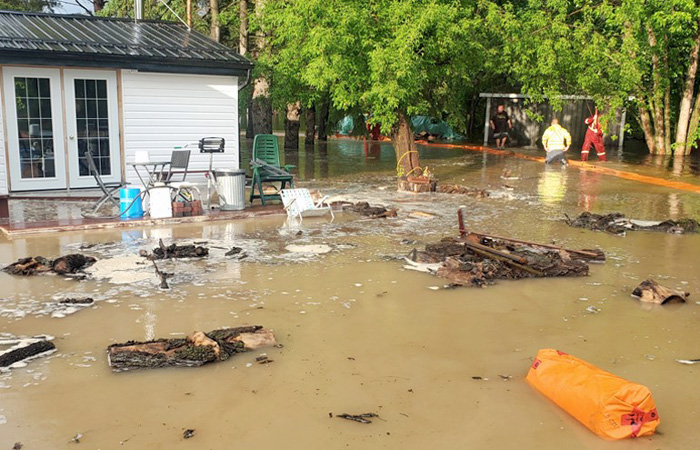Rethinking Lifestyle
What is Climate Resilience?

Last month the Manitoba Government committed $33 million to support ‘damage prevention and climate resilience projects’ across the province. I read the media release with interest.
These projects include flood-proofing roads, upgrading sewage lift stations, backup generators and drainage systems.
This got me thinking. What is ‘climate resilience’ actually? How does it differ from ‘climate adaptation’ and ‘climate mitigation’?
These three: climate mitigation, climate adaptation and climate resilience are the three pillars of the response to climate change agreed through the Paris Agreement.
Climate Mitigation is all about slowing the rate of climate change by reducing greenhouse emissions. We all know these commitments will not stop climate change, but they will reduce the rate of warming and the rate of change.
Climate Adaptation is all about taking the necessary steps to live with the effects of climate change. Activities like building dykes and levees, and raising roads and infrastructure above flood level fall into the climate adaptation category. Additional adaptation measures might include farmers growing crops more suitable to the warmer, drier conditions or, as we have seen in Manitoba during the past few summers, crops that tolerate periods of drought or flooding. Climate Adaptation might include developing systems to hold water for use during times of drought.
Climate Resilience is about becoming more resilient to the effects of climate change. This means being able to withstand the next major natural disaster, and the one after, and the one after. Flooding is one of the most expensive natural disasters we face, and as our neighbours around Brandon face destruction of their businesses, some of our weaknesses are being revealed. Resilient communities have homes and infrastructure capacity to withstand extreme events and procedures in place to maintain businesses and services through an event. When that isn’t possible they have the capacity, infrastructure and systems to care for vulnerable populations should they need to be evacuated. Resilient communities have what it takes to get life up and running again after the extreme event over. Climate resilience means ensuring that businesses and homes resist as many climate events as possible, or that recovery after an event is swift, and inexpensive.
The measures being supported by the Manitoba Government will help us to adapt to climate change, and they will help some communities to become more resilient, but is there more that needs to be done?
We need to think about our resiliency with respect to climate change. Imagine: its 38C with humidex it feels like 50C. A wildfire has taken out Hydro services to most of Steinbach. There is no power. How are you going to keep your house cool? Now imagine that Hydro is telling you it will get power to you in two weeks, the heat hasn’t eased off, and now the forecast is for a major rain event. It is likely to flood your basement. You sit on your front porch to work out how to handle it, thinking ‘oh no, not again, we went through this just last year’…
Climate resilience is living in a house that can be kept cool even if the power is off, living on a property that has been designed to cope with major rain events or that has back up power for sump pumps. Climate resilience means having structural and fiscal systems in place to support communities through crises and get them up and running again afterwards.
Climate resilience is also about learning from events, and working with nature rather than against it. I’d like to see the government supporting this shift. We need to teach our children to be resilient to frequent adverse weather events, events we only see once a decade or once every few years.
Architects and engineers should be trained to design and build homes and infrastructure to support active transportation, using sustainable materials with low energy requirements. Structures need to withstand extreme weather events or be easily reparable after the event.
The livestock production and cropping systems need to use natural systems complemented by artificial inputs. They need to be more adaptable to extreme events so that insurance bailouts happen less often.
None of this preparation will be easy, and we need to be prepared to fail and learn fast, but the way we have always done things isn’t going to work forever.




